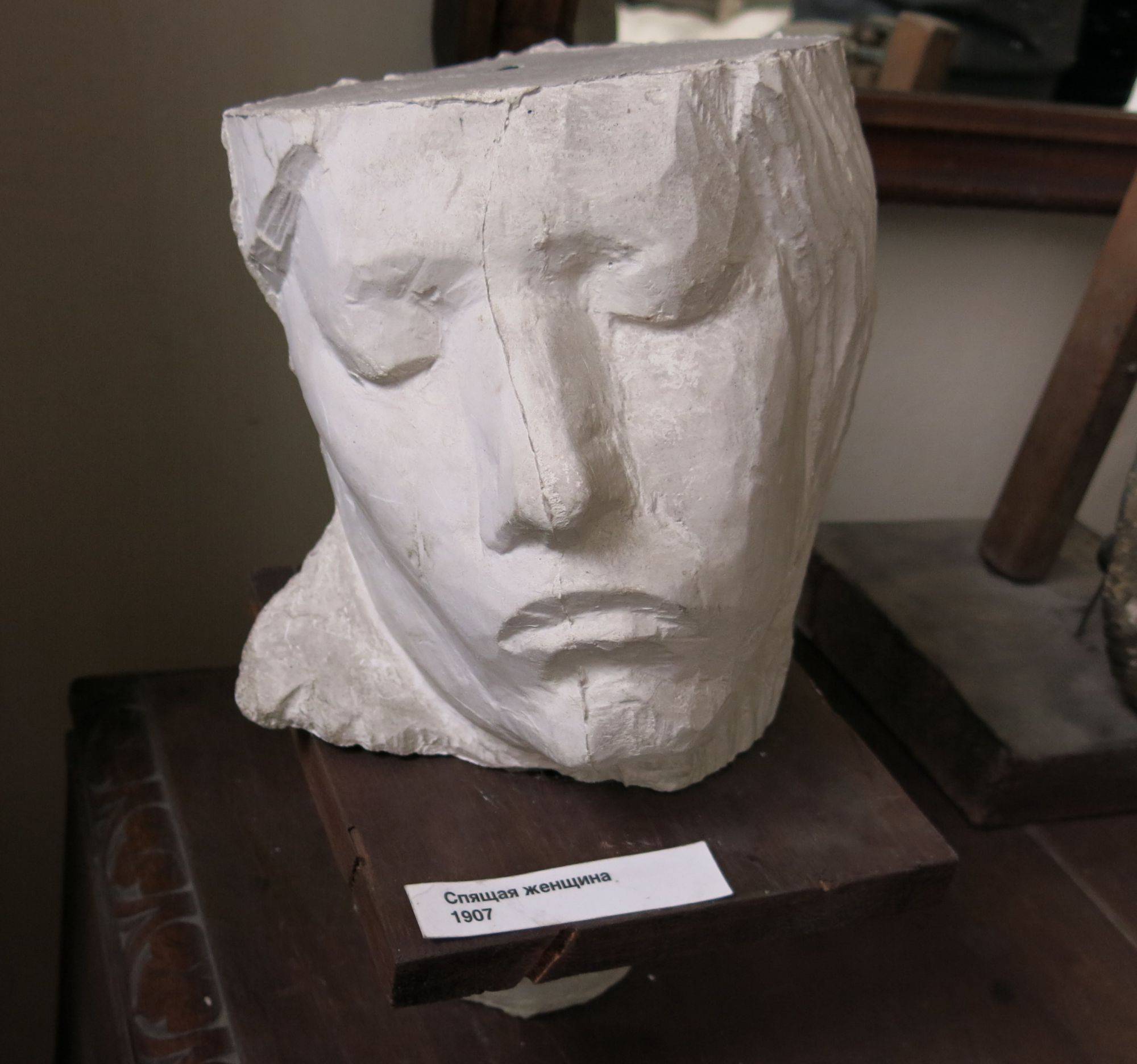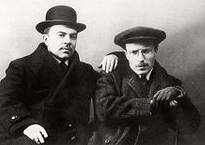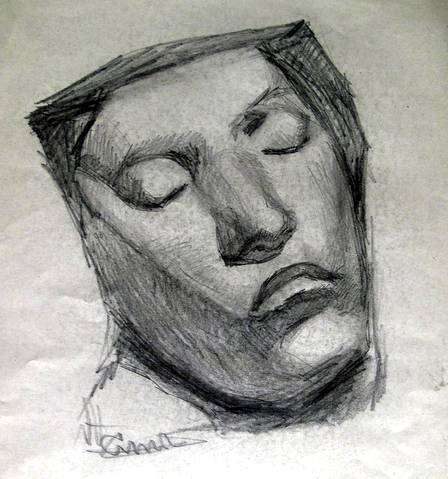Sleeping Woman

Matveev, Aleksandr Terent'evich
1878 - 1960
Sleeping Woman
Gypsum
22cm high
1907
PROVENANCE:
A gift from the artist to his pupil A.L. Malakhin
By descent
LITERATURE:
Included in the Matveev Catalogue Raisonee, No. 40, illus. p 341.
Certificate from Matveev Museum, Moscow.

Aleksandr Matveyev with Pavel Kuznetsov
Sleeping Woman 1907 is an important pre revolutionary work by the leading Soviet Sculptor Aleksandr Matveev. The woman, believed to be the artist's wife, is depicted sound asleep, alone with her dreams. The artist elimates all that he believes is non-essential, just focusing on the features of her face.
Sleeping woman in profile
There is another version of this sculpture preserved in the Matveev Museum in Moscow.
Matveev Catalogue

Matveev's preparatory drawing in the Matveev Museum
Matveev was born Aug. 13 (25), 1878, in Saratov; died Oct. 22, 1960, in Moscow. Soviet sculptor. Honored Art Worker of the RSFSR (1931). Became a member of the CPSU in 1940.
From 1899 to 1902, Matveev studied under S. M. Volnukhin and P. P. Trubetskoi at the Moscow School of Painting, Sculpture, and Architecture. In 1906 and 1907 he worked in Paris. He was a member of the World of Art and Blue Rose groups and the Society of Russian Sculptors. Matveev’s early works, such as Portrait of V. E. Borisov-Musatov (plaster of paris, 1900, Tret’-iakov Gallery), reveal the influence of Trubetskoi’s impressionistic sculpture. Matveev’s favorite subject eventually was the nude, presented in serene repose—for example, the sculptures at the villa of Ia. E. Zhukovskii in Kuchuk-Koe (the Crimea, marble and Inkerman stone, 1908-11; the group is not preserved but fragments are in the Russian Museum in Leningrad) and the tombstone of V. E. Borisov-Musatov in Tarusa (granite, 1910). Because of Matveev’s masterful treatment of the material its inanimate surface comes to life, giving a feeling of the harmonious balance between man’s spiritual and physical forces.
After the Great October Socialist Revolution, Matveev helped implement the Leninist plan of monument propaganda (monument to K. Marx, Petrograd, plaster of paris; not preserved). Matveev’s search for architectonic, generalized forms was particularly evident in such works as the group October (plaster of paris, 1927, Russian Museum, Leningrad; cast in bronze, 1958), in which revolutionary heroism is epitomized in figures marked by classical clarity, and Standing Woman (bronze, 1937, Russian Museum). His sculptures of Russian writers are psychologically penetrating and organically tied to the intrinsic regularities of form (statue of A. S. Pushkin, plasteline, 1948-60, sculptor’s workshop, Moscow).
Matveev’s smaller portraits exhibit scrupulous attention to the plastic construction of form (Self-portrait, bronze, 1939, Russian Museum); in these works the sitter’s most characteristic features are also depicted. The artist’s works for the Petrograd Porcelain Plant (1920’s) are distinguished by a fine understanding of the specific problems of making small sculptures.
Matveev greatly influenced the development of Soviet sculpture not only through his art but also through his teaching. He taught at the Leningrad Academy of Arts from 1918 to 1948 and at the Moscow Art Institute from 1940 to 1948. His pupils included M. A. Vainman, A. M. Ignat’ev, B. E. Kaplianskii, and A. L. Malakhin. Matveev was awarded the Order of the Red Banner of Labor.
REFERENCES
Bassekhes, A. I. A. T. Matveev. Moscow, 1960.
Murina, E. A. T. Matveev. Moscow, 1964.




